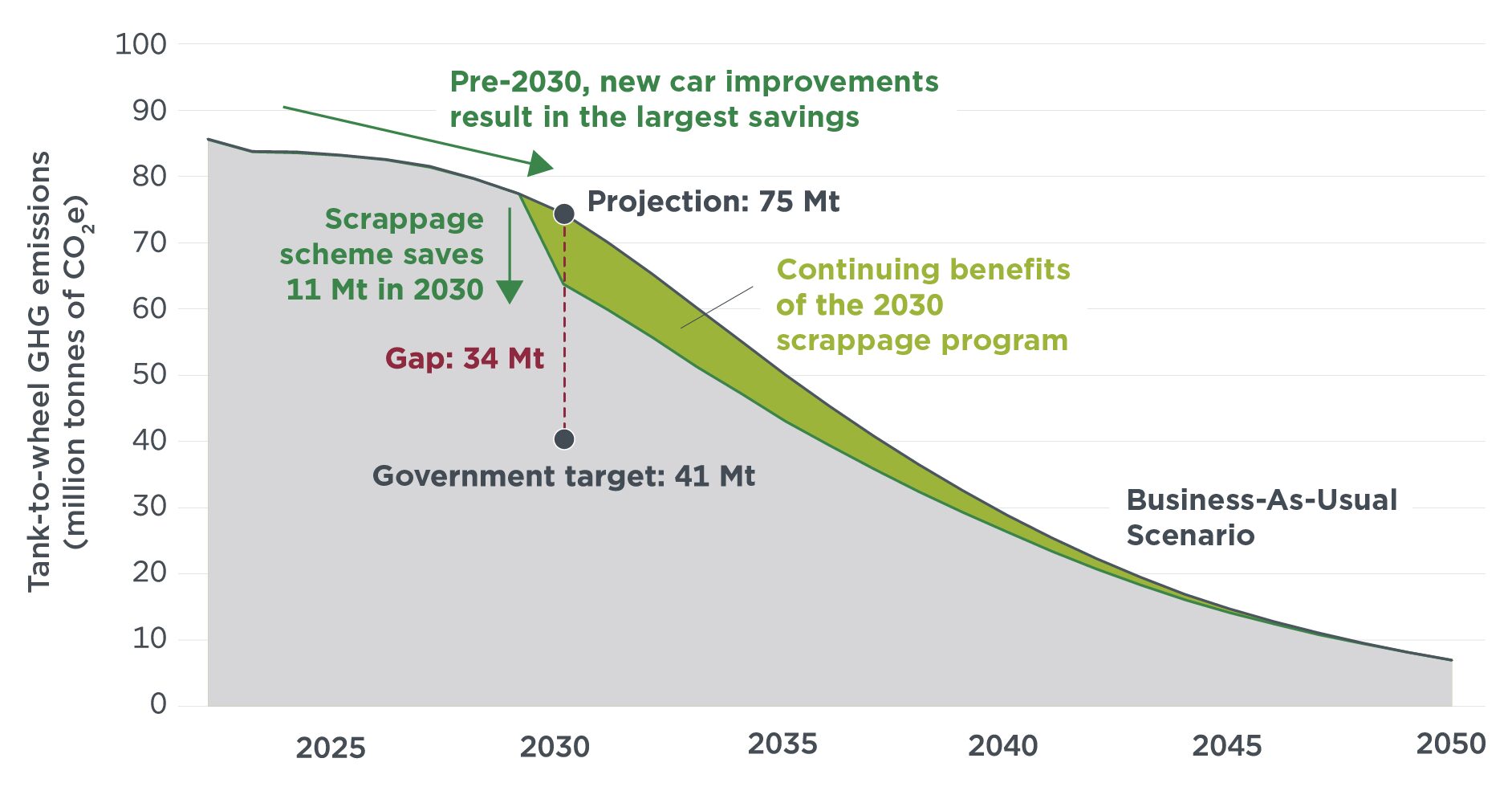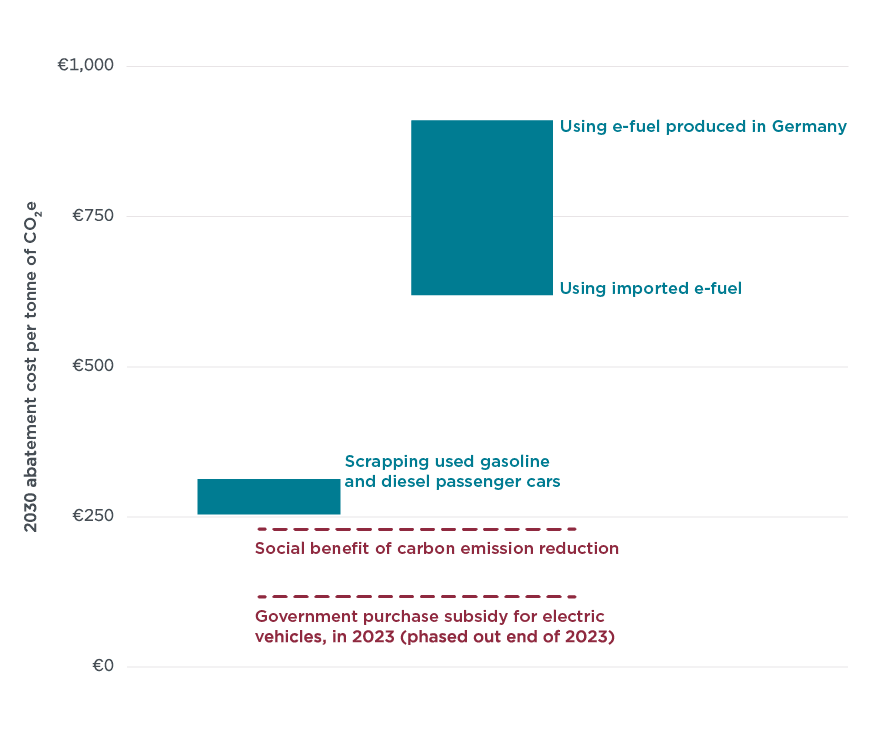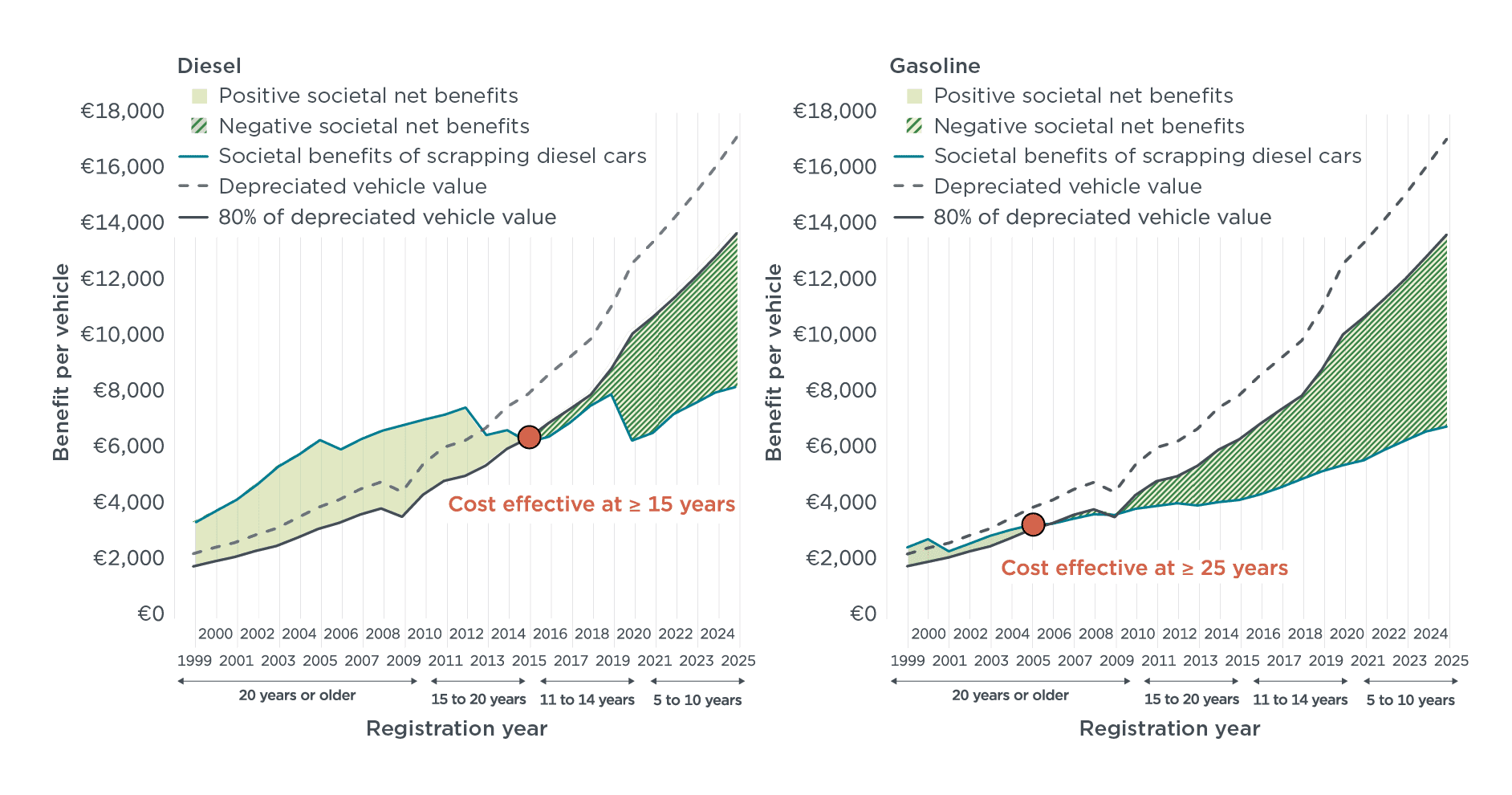Within reach: The 2025 CO2 targets for new passenger cars in the European Union
Report
Cleaning up Germany’s vehicle stock: Strategies to decarbonize the passenger car fleet
The European Union has adopted CO2 standards requiring 100% of new passenger car registrations to be zero-emission vehicles by 2035. Under these standards, we project tank-to-wheel greenhouse gas emissions (GHG) of the total passenger car fleet will decline to 13% below 2022 levels in 2030, 66% below 2022 levels in 2040, and 92% below in 2050. However, these standards alone are insufficient to align passenger car GHG emissions with the European Union’s 2030 economy-wide reduction target of 55% from 1990 levels, and with Germany’s 2030 transport-wide target of 85 Mt of CO2-equivalent (CO2e), without requiring disproportionate reductions in other sectors.
This report highlights strategies to reduce GHG emissions from the vehicle stock and is targeted toward the German federal government. The paper analyzes the extent to which a hypothetical vehicle scrappage program could accelerate GHG emission reductions from the 49 million passenger cars on the road in Germany, the largest passenger car stock in the European Union. We also briefly explore the emissions reduction potential of other strategies, such as avoid-and-shift policies and the use of synthetic fuels, or e-fuels, and discuss how these strategies could affect a scrappage scheme. We also consider the societal costs and benefits of both the vehicle scrappage program and e-fuels, and briefly discuss the feasibility of retrofitting combustion engine cars to battery electric vehicles. Vehicle scrappage strategies are assessed using the ICCT Roadmap model in combination with damage functions for air pollutants derived from a reduced-form air quality and health impact model and using the social cost of carbon values from the German Federal Environment Agency. The projected costs of producing e-fuels in Europe are assessed using the e-fuel cost model developed by the ICCT.
The figure below illustrates the gap between a Business-As-Usual (BAU) scenario of emissions from Germany’s passenger car stock, which includes current policies, and the level of GHG emissions needed to align with Germany’s 2030 climate target for the transport sector. The BAU scenario shows that new car improvements via the European Union’s CO2 standards provide the largest savings on GHG emissions up to 2030. However, we project that a further emissions reduction of 34 million tonnes (megatonnes or Mt) of CO2-equivalent is needed in 2030 to eliminate this gap.
Figure. Pathways to reduce passenger car emissions in line with Germany’s 2030 climate target, including a scrappage program
Key findings
Given the results of the study, we conclude that a mix of measures will be necessary to reduce vehicle stock emissions and that no single approach will be able to achieve Germany’s established climate goals. Drastically reducing the emission levels of new passenger cars coming onto the roads by fully replacing internal combustion engine vehicles with battery electric vehicles earlier than the 2035 EU target would hasten the decarbonization of the vehicle stock. This option would significantly lower the costs and political challenges of decarbonizing the fleet later and help close the expected emissions gap for 2030.
A vehicle scrappage program could eliminate roughly one third (11 Mt CO2e) of the gap with Germany’s climate target for 2030 but would need to be carefully designed to ensure net benefits.
Scrappage incentives that compensate vehicle owners for 80% of the residual value of their vehicles could deliver positive net benefits if the program is limited to diesel cars 15 years or older and gasoline cars 25 years or older in 2030, and if the program has full participation. Such a program would reduce the passenger car fleet emissions gap by roughly a third (11 Mt CO2e). The expected abatement costs (excluding health benefits) would amount to about €313 for diesel and €255 for gasoline cars per tonne of CO2e avoided in 2030. Additional health benefits, such as avoided premature deaths from cardiovascular and lung diseases, would arise from reductions in air pollutant emissions. These account for 40% of the benefits of scrapping diesel cars and 16% of the benefits of scrapping gasoline cars.
E-fuels could contribute to passenger car CO2e emission reductions—although to a much lower extent than a vehicle scrappage program—but would be a very expensive option.
Tank-to-wheel (TTW) GHG emissions totaling 190 thousand tonnes of CO2e of could be avoided from passenger cars in 2030, assuming the revised recast of the Renewable Energy Directive (RED III) target for renewable fuels of nonbiological origin and advanced biofuels, as well as the e-fuels target in the ReFuelEU aviation regulation, are met in Germany. This assumes all e-diesel produced is used for passenger cars only, despite the multiplier for e-fuels used in the marine sector in the RED III. The production costs of e-fuels in Germany are projected to be €2.9 per liter in 2030, expressed in 2021 euros—roughly 4 times the 2021 spot price of gasoline in Germany of €0.7 per liter, excluding duties and taxes. This cost of producing e-fuels in 2030 translates to €910 per tonne of avoided TTW CO2e, which is 4 times the social cost of GHG emissions estimated by the German Federal Environment Agency (€225 per tonne in 2021 prices). In comparison, the purchase subsidy for new BEVs provided by the German government in 2023 translates into an abatement cost of about €105 per tonne of CO2e avoided. If e-fuels are imported to Germany from a renewable-rich country like Brazil, the expected abatement cost could be lower but not close to as low as the abatement cost provided by purchase subsidies. Unlike the other policy options evaluated, incentivizing e-fuels would not deliver health benefits from reduced air pollution.
Avoid-and-shift policies can increase the likelihood that consumers will opt into a vehicle scrappage scheme while also contributing to emission reductions.
Policy instruments such as supporting public transport, speed limits, and CO2 pricing contribute to lowering stock emissions while simultaneously promoting a modal shift that could also broaden participation in a scrappage scheme. Other benefits from avoid-and-shift policies include health benefits such as increased physical activity and reduced air pollution exposure. We do not quantify the costs of these actions relative to their benefits nor how they contribute overall to the cost efficiency of the scrappage program. Avoid-and-shift policies could be considered as supplementary to any other stock CO2 reduction measure.



